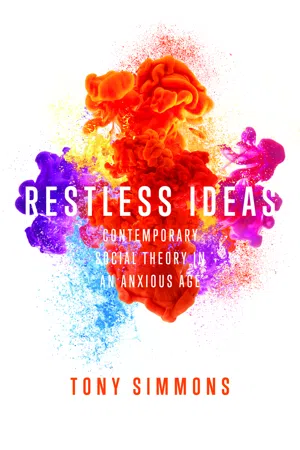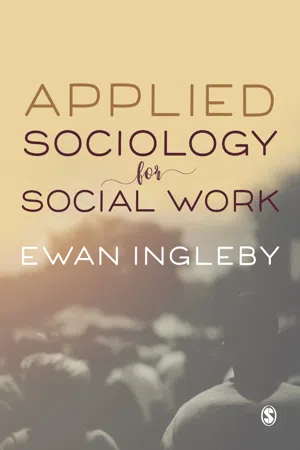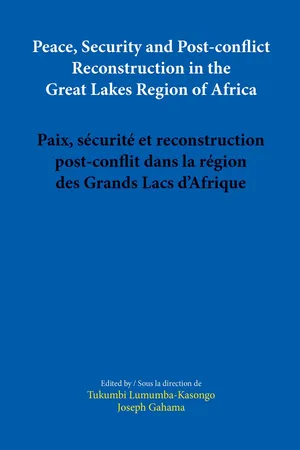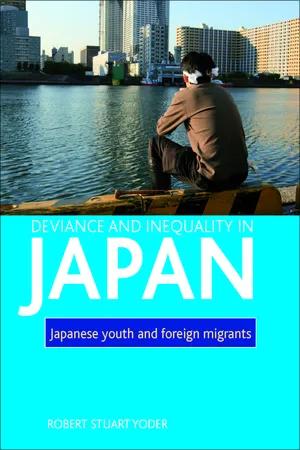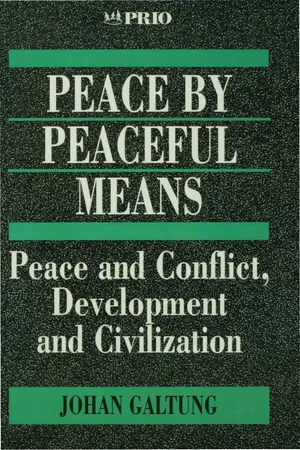Psychology
Conflict Theory
Conflict theory in psychology refers to the perspective that views society as a collection of groups in constant struggle for resources and power. This theory emphasizes the role of conflict, competition, and inequality in shaping human behavior and relationships. It suggests that societal conflicts and power imbalances influence individual behavior and mental processes.
Written by Perlego with AI-assistance
Related key terms
1 of 5
7 Key excerpts on "Conflict Theory"
- Carol L. Langer, Cynthia Lietz(Authors)
- 2014(Publication Date)
- Wiley(Publisher)
Social workers can easily point to the many conflicts that emerge from practice settings. Parents have conflict with a child; a child has conflict with a teacher; and a client has conflict with a department of social services. Social workers may be involved in the conflict or may be called upon to resolve the conflict. Some people avoid conflict because they think it is a distressing and unpleasant experience. For social workers, however, conflict can be a signal that change may be possible. Values and ethics guide social work practice, and social workers are required to advocate social and economic justice; they may conflict with existing social policy and service delivery systems. Social workers are sometimes called change agents. Creating and sustaining change can be uncomfortable and contentious. Social workers learn that conflict may be inevitable but can have good outcomes.This chapter discusses Conflict Theory. Despite the terminology, Conflict Theory is more of a perspective than a theory. It is a large view and can be widely applied across systems, but it does not have a step-by-step plan. Therefore, it may vary in application and is difficult to measure. Conflict Theory is analytic and descriptive; its assumptions help social workers to understand what is driving a conflict. Social workers learn that conflict is more than a disagreement about a curfew or picking up dirty socks and putting them in the clothes hamper. The chapter therefore discusses the historical development of Conflict Theory. The theory’s key concepts and principles are discussed. Strengths and limitations of Conflict Theory are also identified. Finally, two case examples are provided to illustrate the theory.A Historical Discussion of Conflict Theory
Contemporary Conflict Theory has its roots in classical Marxism. Marx’s political economic theory, termed dialectical materialism, provides the foundation for understanding and distinguishing power differentials in relationships (Marx & Engels, 1848/1955; Marx, 1887). Marx believed that the economic form that any society used created the dynamics of all other social institutions. He thought capitalism was particularly damaging to people and institutions. A dialectic is essentially an ongoing debate. There are always at least two sides to an issue. As those perspectives are debated and act upon each other, a new debate emerges. Marx called his theory materialism because he believed that people needed to talk about real things in theoretical terms and he was discontent to leave theorizing as an abstract. Through dialectical materialism, essential assumptions of Conflict Theory were formed as follows: (a) conflict is inevitable, (b) there is an unequal distribution of power in relationships, (c) there is an ongoing struggle for scarce resources, and (d) whoever has the most power controls the distribution of resources, also summarized in Table 5.1- George Ritzer(Author)
- 2019(Publication Date)
- Columbia University Press(Publisher)
Thus Conflict Theory is a good deal broader than specific theo-ries about conflict itself. A narrower version was the now classic line of theory put forward by Simmel (1908) and developed by Coser (1956), which is concerned largely with the consequences of conflict within a social system, conceived in a functionalist manner. Other such theories have viewed conflict as a matter of structural strain, periods of transi-tion among equilibrating systems, or of individual undersocialization or deviance. Such theories about conflict are not necessarily conflict theories in the larger sense. Conflict Theory is a general approach to the entire field of sociology. The phenomenon of conflict is only a dramatic emblem of the ap-proach, for conflict itself is patterned by the structure of stratification, by the intensity of domination, by the resources that enable groups to organize and mobilize (or prevent them from it). Overt conflict is rela-tively rare; even military combat, as close analysis shows (Collins 1989), is more of a matter of maneuvering to break down organizational bonds than actual physical destruction. Conflict Theory does not ex-clude a theory of social solidarity, even of social ideals, moral senti-ments, and altruism. It is mainly because of the distribution of material 3. Conflict Theory and the Advance of Macro-Historical Sociology 71 and organizational conditions producing such ideals and sentiments that individuals are able to dominate hierarchies, or groups are able to form to engage in concerted conflict. The crucial point is that Conflict Theory does not take ideals and morals as analytically sacrosanct, as givens outside of sociological analysis. Instead, conflict theorists show the conditions under which ideas and ideals are generated, how and when they produce solidarity, when they aid domination by giving it legitimacy, and when these processes are structured so as to generate antagonisms and even overt conflict.- eBook - ePub
Restless Ideas
Contemporary Social Theory in an Anxious Age
- Tony Simmons(Author)
- 2020(Publication Date)
- Fernwood Publishing(Publisher)
In summary, the subject of conflict remains a central topic in social theory and throughout the social sciences and humanities. However, for social theorists, the challenge has always been to reduce the complexity of the existing historical and empirical research literature on human conflict to some general themes and explanations. All theories of social relations or social behaviour necessarily draw upon a vast repository of documented fact and accumulated knowledge. But the construction of social theory inevitably relies upon the oversimplification of these research resources in order to search for the general causes, conditions and consequences of various types of human conflict. It is only by identifying generalizable causal explanations of human conflict that it becomes possible to develop informed and practical strategies for managing, ameliorating or even resolving these conflicts.Origins of Conflict TheoryWe shall now examine the development of Conflict Theory in modern sociology and locate the sources of some of these ideas. Although Conflict Theory emerged as a distinct theoretical discourse in sociology (within the past sixty years or so), its roots may be found in ideas that go back to the ancient Greek philosophers and historians, such as Heraclitus and Thucydides, and to medieval Arab philosophers, such as Ibn Khaldun. It is important to acknowledge these early influences in order to show that every theoretical perspective in sociology has its roots in the ideas of earlier social thinkers. Another important reason for acknowledging the influence of classical Greek, Roman, Chinese and Arab thinkers on the tradition of Conflict Theory, is to counter the Eurocentric bias of traditional historical accounts of social theory. To judge from many standard textbook accounts of the development of social theory, it has only been dead, white guys who made any significant contribution to our understanding of society. This kind of ethnocentrism and androcentrism blinds us to the influence of distinguished scholars from non-European civilizations whose ideas anticipated many of the concepts that have become fashionable in contemporary sociological theory. - eBook - ePub
- Ewan Ingleby, Author(Authors)
- 2017(Publication Date)
- SAGE Publications Ltd(Publisher)
Mental health is interpreted by conflict theorists by exploring the material circumstances that influence particular mental health needs. This sociological theory is able to help us in our professional work as social workers. Conflict theorists explore the relationships that exist between mental health and material circumstances. They are interested in how mental health links to economic circumstances and, rather than accepting the existence of mental illness, the relationship between mental health and economics is studied. It is clear that mental health is influenced by material circumstances. In the earlier case study in this chapter, the man who was portrayed lying ‘bleeding in the gutter’ might have been in that situation because he was homeless. In this example, homelessness may exacerbate particular mental illnesses – if you do not have enough money to live on and you are ‘on the streets’, then this is likely to place strains on both your mental and physical health, so there is a connection between material circumstances and mental health. Conflict theorists are interested in studying this relationship. It can be argued that there are other ‘mild’ mental illnesses that may be a product of particular levels of income. The upper and middle classes have more disposable income, and this situation might, in fact, exacerbate particular mental illnesses. The disposable income that is available to the individuals in these social classes enables them to have private consultations with specialist medical staff. By talking about your state of mind with these professionals and paying for their services, there is a likelihood that a particular set of conditions may be diagnosed. Conflict theorists are interested in the material power of these groups of people in societies as this material power can influence mental health problems and their diagnosis. This situation is exacerbated by the difficulties that exist when we try to define mental illness. The imprecise nature of mental illness can lead to variability of interpretation. If a person is wealthy enough to pay a physician enough money for enough time to have enough consultations, there is a strong possibility that mental illnesses will be diagnosed. In this way, Conflict Theory can enrich our practice as social workers when we are working with those who have complex mental health needs.Case study
Dwight began to experience ‘personality disorders’ at the age of 25. He began to hear voices in his head when he was forced to live on the streets in London. Dwight’s family background is Afro-Caribbean and he has a history of schizophrenia in his family. It was, however, his material circumstances – living on the streets as a homeless man – that appeared to be the catalyst that led to the emergence of Dwight’s schizophrenia.Reflective activity 4.6
What is of interest to Conflict Theory and social work about this case study?Feedback on reflective activity
The case study reveals that there is a connection between mental illnesses and material circumstances. This will interest conflict theorists. As mentioned in the case study, the material circumstances that are experienced by Dwight as he lives on the streets appear to be the catalyst for his schizophrenia, as prior to living on the streets, Dwight did not have the symptoms of schizophrenia. It is, however, important to realise that conflict theorists do not have a monopoly on plausible explanations for mental illnesses. There may be a genetic explanation for some mental illnesses, as discussed later in this book. The genetic theory behind schizophrenia identifies the link between family members with schizophrenia and the development of this condition in their offspring. In this example, the key cause for Dwight’s schizophrenia might be his inherited condition, therefore the genetic reasons for schizophrenia need to be taken into consideration in this example. - eBook - PDF
- Tukumbi Lumumba-Kasongo(Author)
- 2017(Publication Date)
- Codesria(Publisher)
These theories explain the origins of conflicts, their causes and manifestations, their trajectories and their social, cultural and economic implications at the individual, group, country, regional and international levels. The location of the conflict culturally, sociologically, economically and politically through a theoretical analytical framework is likely to inform us how the conflict might be resolved. Thus, the nature of the explanations would provide knowledge and embody assumptions about how to proceed in changing a conflicting situation. This chapter identifies and broadly examines elements of major theories that are used more specifically in the social sciences and humanities to explain how they deal with the origins of conflicts, their manifestations, both human and material resources, agencies and their ideological base, if any. The main questions about dealing with theories of conflicts are: (1) Why do conflicts occur? (2) How do they occur? (3) Who are their agents and what are their agencies? (4) How are they managed? (5) What resources are used to advance them? (6) What are their intended and non-intended consequences? Finally, (7) Can they be prevented both in the short as well as in the long run? In general, all theories of conflict address most of these questions though this may not be in order listed here. It should also be emphasised that there are weak and strong theories of conflict. The ‘weakness’ and ‘strength’ of the theories depend very much on the schools of thought in which one is located. Weak theories are those that do not take seriously the context in its holistic manner. They do not pay enough attention to conditions that led to conflict. These theories are not sufficiently testable and not strongly applicable because they lack rigorous and systematic logic of explanation. Lumumba-Kasongo: Contemporary Theories of Conflict 31 When theories are not capable of explaining what is being analysed, they become irrelevant. - eBook - PDF
Deviance and inequality in Japan
Japanese youth and foreign migrants
- Yoder, Robert Stuart(Authors)
- 2011(Publication Date)
- Policy Press(Publisher)
Conflict Theory often applied to class inequality is about power and privilege and how they are exercised by a dominant group over subordinate groups for the purpose of maintaining legitimacy, sustaining individual and factional power and privilege and enhancing the interests of particular objectives (Gelfand and Lee, 1973; Schermerhorn, 1978, pp 23-24; Krauss et al, 1984; Hashimoto, 2003). A labelling Conflict Theory combines labelling and conflict as a means to understand both the social psychological dimension of human thought and action along with the structural elements that influence the labelling process to begin with. Entry and participation represent stages to unravel the process of labelling and conflict applied to the dynamics of inequality and deviance for our two subordinate subcultural groups. ‘Replication’ is a methodological concept referring to interrelationships that remain relatively the same when controlling for a third variable (Babbie, 1989). The term is borrowed here as a descriptive device to explain how labelling and 166 Deviance and inequality in Japan conflict proceed over time for our two subordinate subcultural groups in spite of social change. We begin with entry. Entry Members of youth and foreign migrant subordinate subcultural groups enter the condition of inequality through ascription: by age and nationality. Conditions of inequality were already set prior to entrance.Youth are confronted with a new set of criminal laws particularly pre-delinquency, stifling middle-school rules and regulations and based on family social class put into a school environment that will set the course for future school success and proclivity towards deviant behaviour. Foreign migrants at birth or on arrival in Japan are restricted by immigration laws and controls and are faced with institutionalised discrimination against foreign nationals.This sets the stage for variable situations and conditions that tie in with deviant behaviour. - eBook - ePub
Peace by Peaceful Means
Peace and Conflict, Development and Civilization
- Johan Galtung(Author)
- 1996(Publication Date)
- SAGE Publications Ltd(Publisher)
PART II
Conflict Theory
1
Conflict Formations
1.1 Conflict as Creator and Conflict as Destroyer
A theory of conflict is as indispensable for development studies as it is for peace studies. To develop is to create. The same is true of peace, but peace also has that emphasis on violence-reduction and non-violent conflict transformation. Deep inside every conflict lies a contradiction, something standing in the way of something else. A problem, in other words. And what could serve better as a force motrice for any actor, individual or collective, than a problem demanding to be solved?But somewhere a danger is also lurking, particularly if the problem is highly solution-resistant. ‘Something standing in the way of something else.’ I want something badly, but so does somebody else. I want something badly, but I also want something else. These classical situations will be referred to as the elementary conflict formations or conflict atoms:Dispute: Two persons, or actors, pursuing the same scarce goal.Dilemma: One person, or actor, pursuing two incompatible goals.The dispute easily leads to efforts to harm or hurt that actor whose pursuit is standing in the way, in other words to Other-destruction. And the dilemma may lead to efforts to deny something in oneself, in other words to Self-destruction. There may also be Self-destruction in the dispute (denying one’s own pursuit of that evasive goal, e.g. leadership of a group) and Other-destruction in the dilemma (taking ‘it’, the frustration, out on somebody else). Most of us experience both, every day. Conflict generates energy. The problem is how to channel that energy constructively.This is reminiscent of the classical Chinese double-character definition of ‘crisis’, a concept in the neighborhood of ‘conflict’, as ‘danger’ + ‘opportunity’. ‘Danger’ is close to ‘violence’, and ‘opportunity’ reasonably close to ‘challenge’, the root of creation. Here we see old Chinese wisdom, very different from single-minded fear in connection with conflicts, trying to do away with them by solution/resolution/dissolution; even to conceal them by sweeping them ‘under the carpet’, meaning away from personal and social awareness or consciousness.
Index pages curate the most relevant extracts from our library of academic textbooks. They’ve been created using an in-house natural language model (NLM), each adding context and meaning to key research topics.


